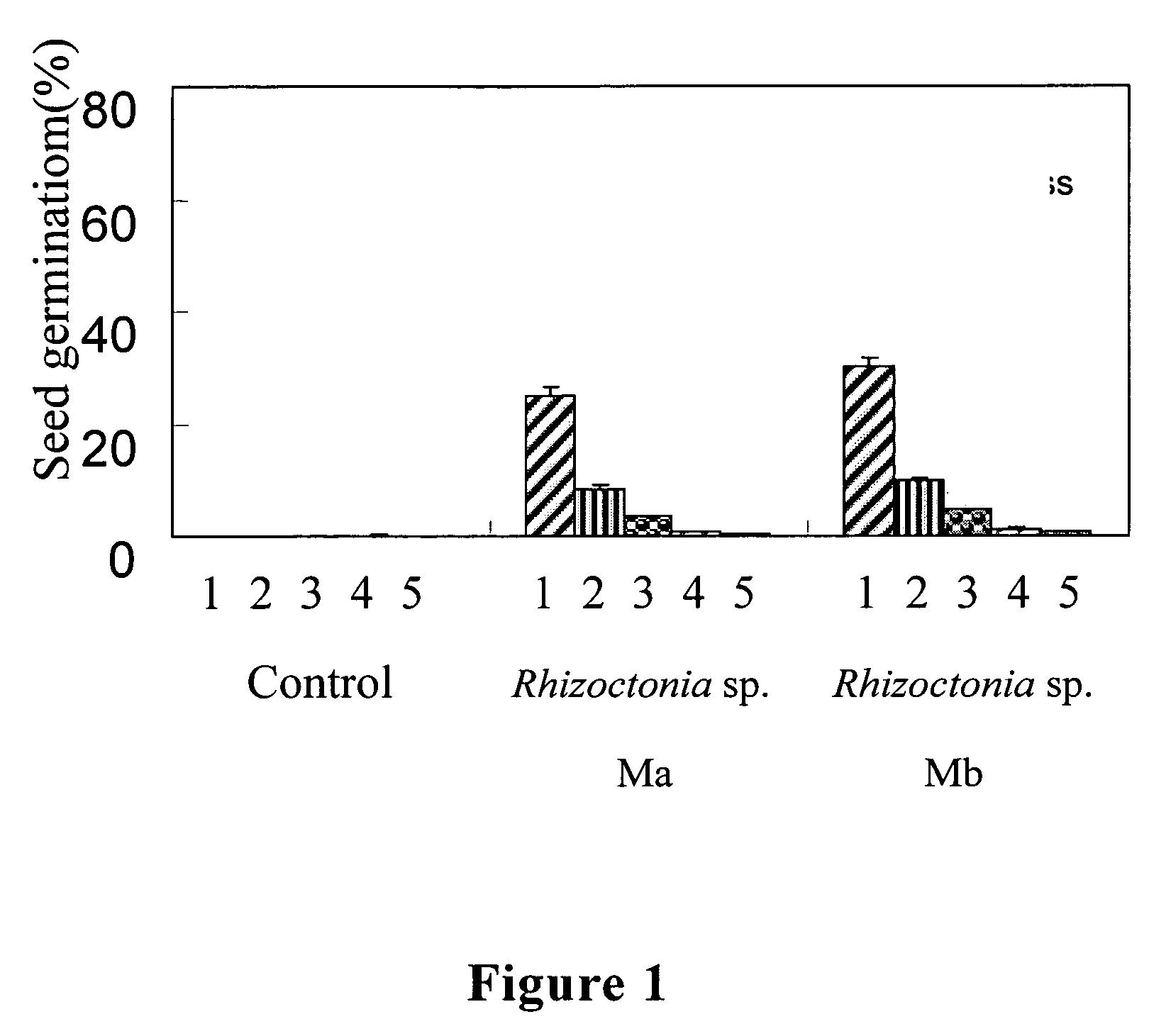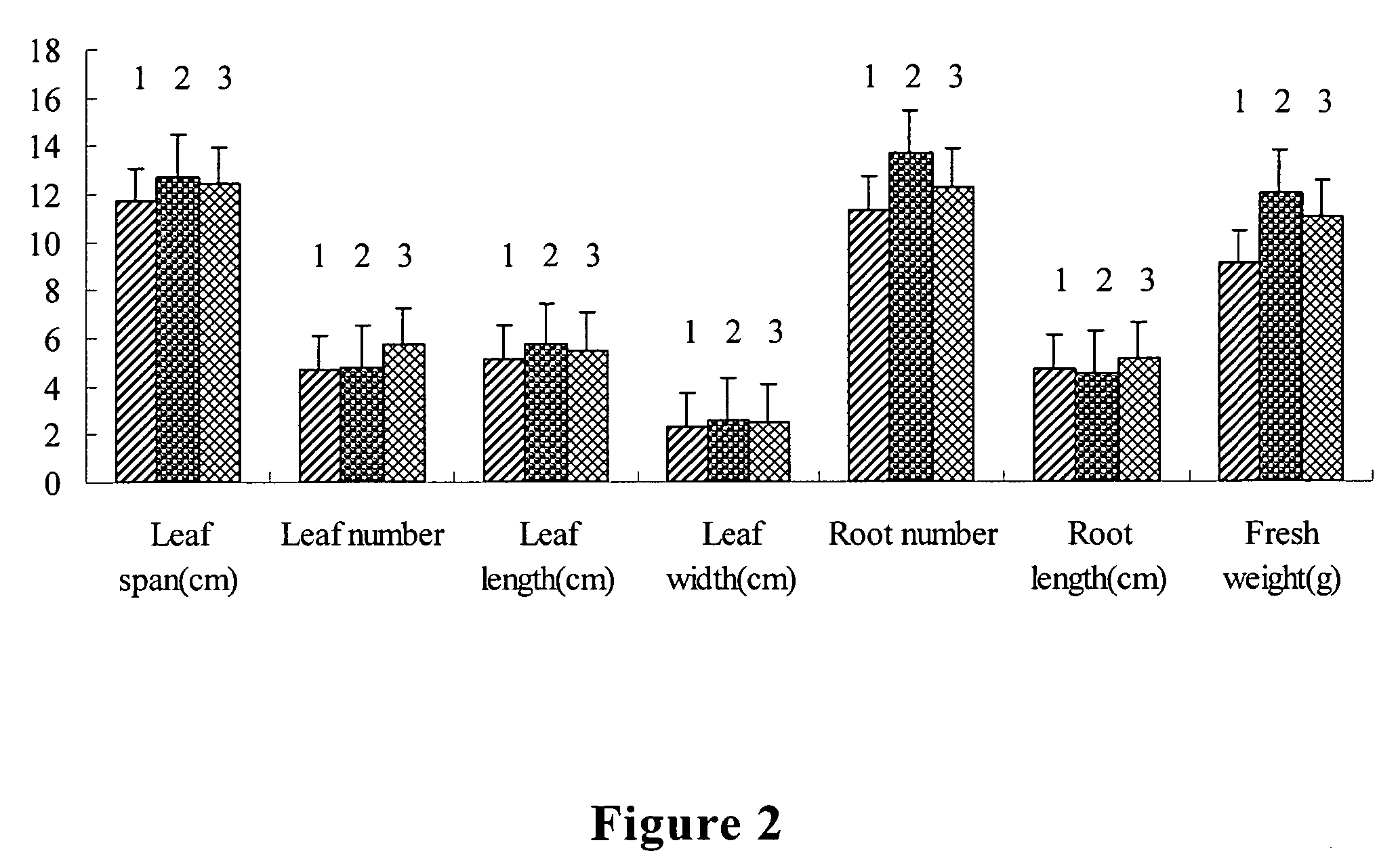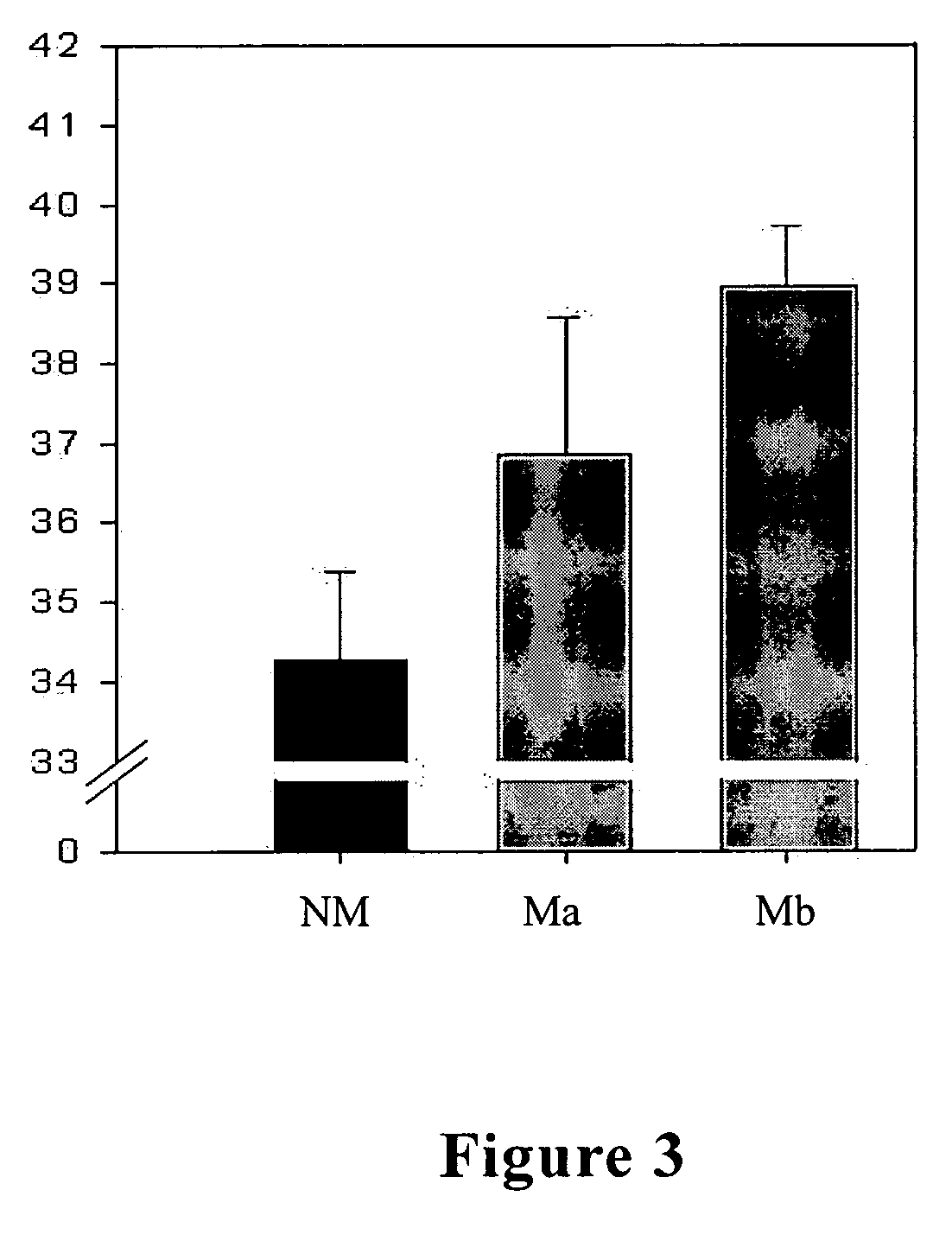Bio-fertilizer composition for promoting growth or orchid plants and application
a technology of biofertilizer and composition, which is applied in the field of biofertilizer composition, can solve the problems of low germination rate and low asexual reproduction (agamogenesis) rate of strains, difficulty in cultivation, and high price of orchids, so as to promote orchid seed germination, prevent disease, and promote planting
- Summary
- Abstract
- Description
- Claims
- Application Information
AI Technical Summary
Benefits of technology
Problems solved by technology
Method used
Image
Examples
example 1
Isolation and Purification of Orchid Symbiotic Organisms
[0025] Orchids are observed after slicing of each orchid plant under microscope, and the roots suspected to be infected with orchid symbiotic organisms are sampled to isolate the microbes from the infected roots. First of all, the roots are washed, sonicated with 1% sodium hypochlorite for 15 to 20 min for disinfection, then washed with sterile distilled water three times. The roots are cut into pieces, placed in separation culture media, and incubated in the dark at 25° C. for 3 to 4 days till mycelia appear. Single hypha picked from mycelium is subcultured into potato dextrose agar (PDA) plate (39 S / L of DIFCO potato dextrose agar) for colony purification. Purification of hypha is determined according to the growth condition of hypha, and the non-purified hypha is picked with a needle, incubated in a fresh PDA plate till colonies are purified. Purified colonies are placed into test tubes respectively and stored at 4° C.
[002...
example 2
Analysis on the Pathogenicity of Orchid Symbiotic Organisms
[0027] Both Rhizoctonia sp. Ma and Rhizoctonia sp. Mb are analyzed for their pathogenicities to affirm their danger to plants.
[0028] Sterilized peat mosses or soil-free media are used as the growing media for testing plants. First of all, the surfaces of seeds are disinfected with sodium hypochlorite, these seeds includ crop blocks such as mung beans (bean family), cucumbers (calabash family), radishes (crucifer family) or rice and so on. These disinfected seeds are sowed directly, or germinated in advance, and placed into the media containing purified orchids symbiotic organisms, in the ratio of 0.5-1 g microbes to one plant in a plastic vessel respectively. The water level is adjusted to be the same as in the field. The container and the plant are wrapped with a large transparent plastic bag to prevent the spreading of harmful microbes, and the plant was kept away from the side of bag to avoid the abnormal growth. These ...
example 3
Preparation of the Bio-Fertilizer Composition
[0029] Culture media containing 39 g of Difco PDA (potato dextrose agar) in one liter of water are autoclaved at 121° C. for 20 minutes to cultivate the purified orchid symbiotic organisms obtained from Example 1, which are stored as the seed stocks.
[0030] The orchid symbiotic organisms can be cultivated and produced in liquid form or solid form. GY culture solution (2% of glucose and 1% of yeast extract), CM culture solution (5 g each of glucose, yeast extract and malt extract are added to one liter media), and MP culture media (2.5% of milk powder) are applied for liquid form cultivation. These culture solutions are autoclaved for 20 min to be sterile. After the media are cooled, the abovementioned orchid symbiotic microbial seed stocks are inoculated to cultivate either stay quiet at 25° C. or shake at low speed (80-100 rpm). Five days later, the solution of culture media ias ground with a disinfected juice grinder to disperse the my...
PUM
 Login to View More
Login to View More Abstract
Description
Claims
Application Information
 Login to View More
Login to View More - R&D
- Intellectual Property
- Life Sciences
- Materials
- Tech Scout
- Unparalleled Data Quality
- Higher Quality Content
- 60% Fewer Hallucinations
Browse by: Latest US Patents, China's latest patents, Technical Efficacy Thesaurus, Application Domain, Technology Topic, Popular Technical Reports.
© 2025 PatSnap. All rights reserved.Legal|Privacy policy|Modern Slavery Act Transparency Statement|Sitemap|About US| Contact US: help@patsnap.com



